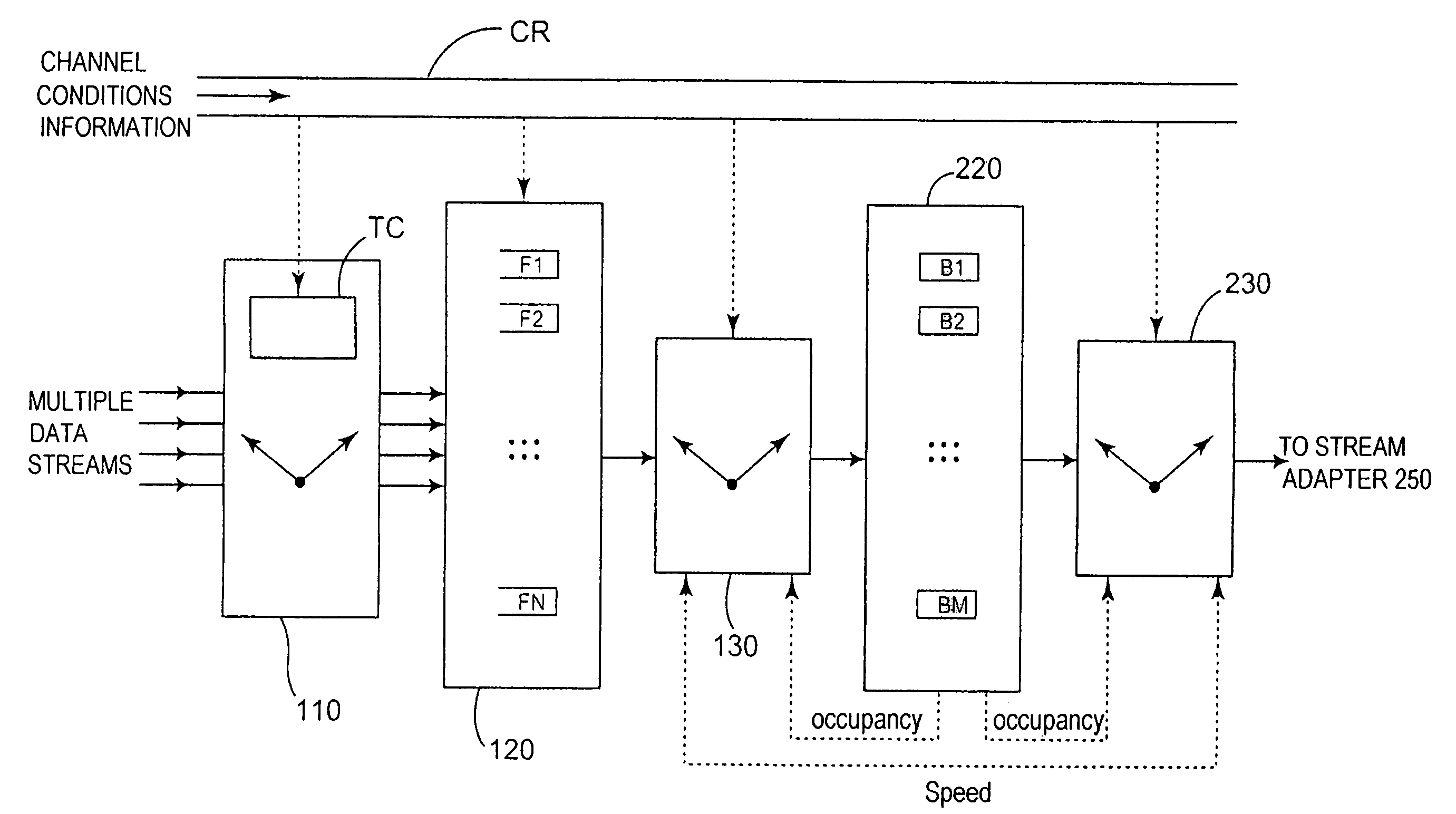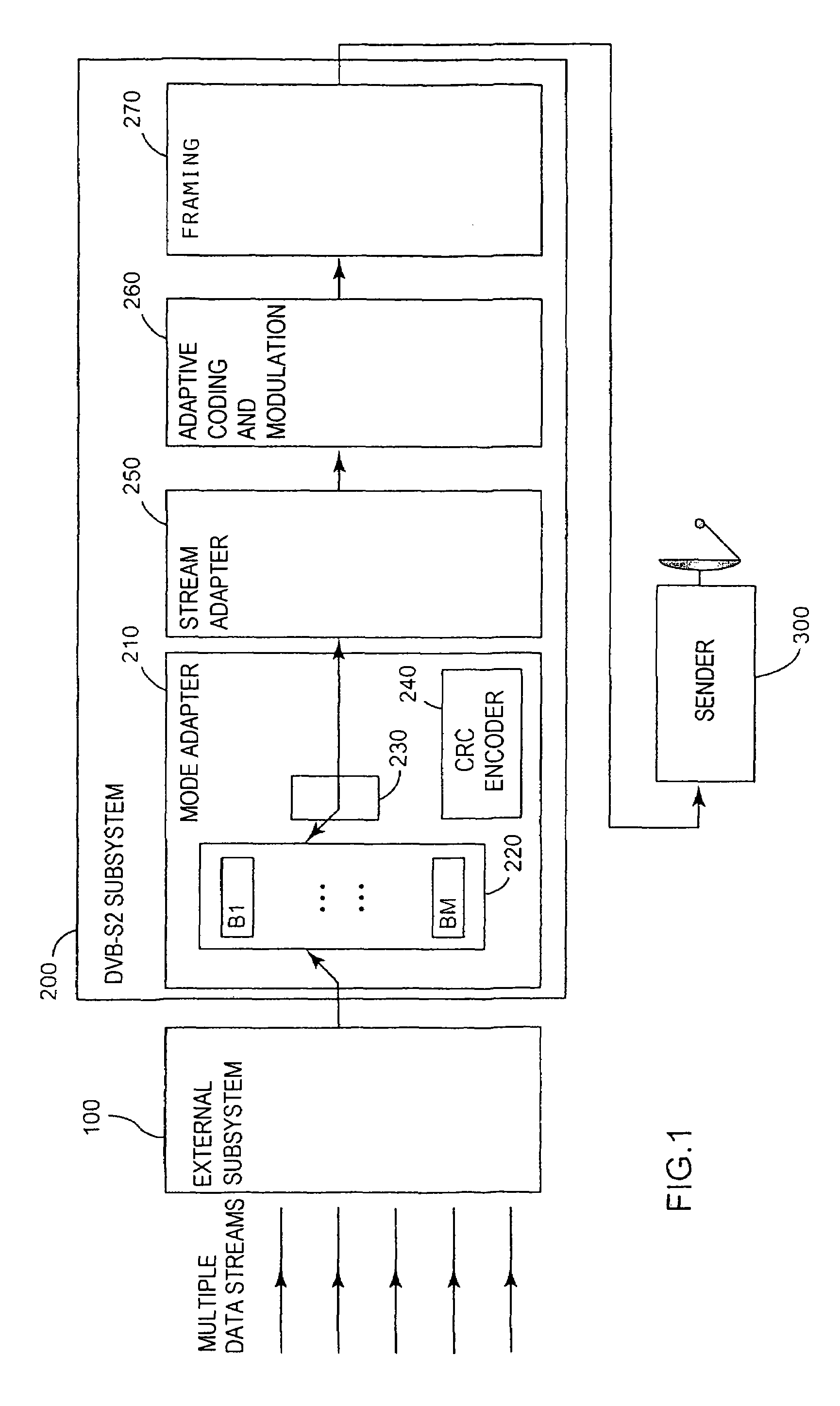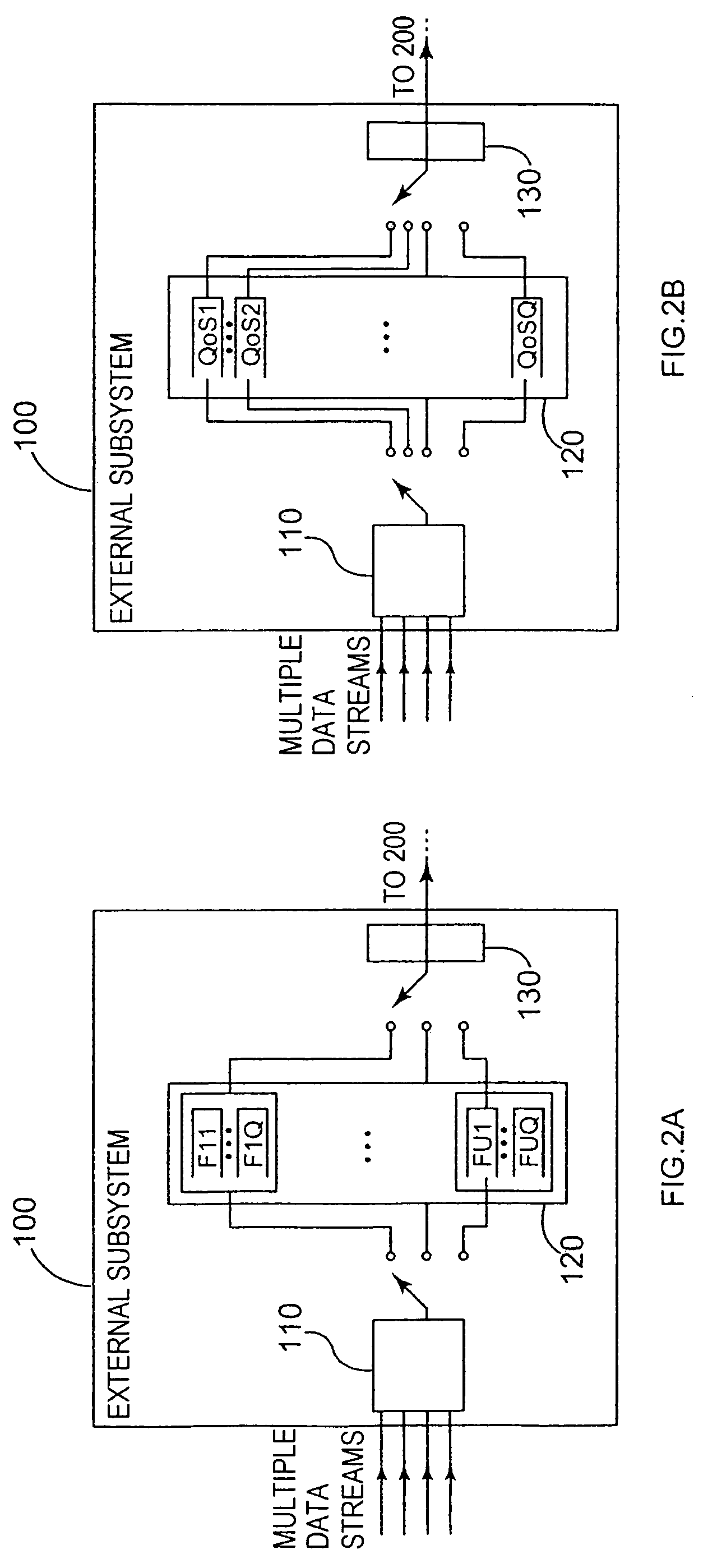Method and a device for scheduling and sending data packets from a common sender to a plurality of users sharing a common transmission channel
a data packet and transmission channel technology, applied in the field of methods and devices for scheduling and sending data packets from a common sender to a plurality of users sharing a common transmission channel, can solve the problems of low data rate, detriment of other users, and inability to adapt to satellite communications systems
- Summary
- Abstract
- Description
- Claims
- Application Information
AI Technical Summary
Benefits of technology
Problems solved by technology
Method used
Image
Examples
Embodiment Construction
[0074]FIG. 1 shows, in highly simplified form, a transmission system conforming to the DVB-S2 standard. A system of this kind is capable of receiving at its input multiple streams of data, either generic streams or streams encapsulated in accordance with the MPEG standard. A first stage of scheduling the data is effected by an external subsystem 100, which depends on the specific application and is not defined by the DVB-S2 standard. The data is then forwarded in an order established by said external subsystem 100 to the DVB-S2 subsystem 200, which is made up of the following units: a mode adapter 210, a stream adapter 250, an adaptive coding and modulation unit 260 and a framing unit 270. Finally, the data is forwarded to a sender 300 in order to be sent to users.
[0075]The FIG. 1 system may be implemented in a terrestrial transmission station, in which case the satellite is simply a transparent repeater; this is the situation illustrated by FIG. 20 of the paper by R. Rinaldo, M. A....
PUM
 Login to View More
Login to View More Abstract
Description
Claims
Application Information
 Login to View More
Login to View More - R&D
- Intellectual Property
- Life Sciences
- Materials
- Tech Scout
- Unparalleled Data Quality
- Higher Quality Content
- 60% Fewer Hallucinations
Browse by: Latest US Patents, China's latest patents, Technical Efficacy Thesaurus, Application Domain, Technology Topic, Popular Technical Reports.
© 2025 PatSnap. All rights reserved.Legal|Privacy policy|Modern Slavery Act Transparency Statement|Sitemap|About US| Contact US: help@patsnap.com



